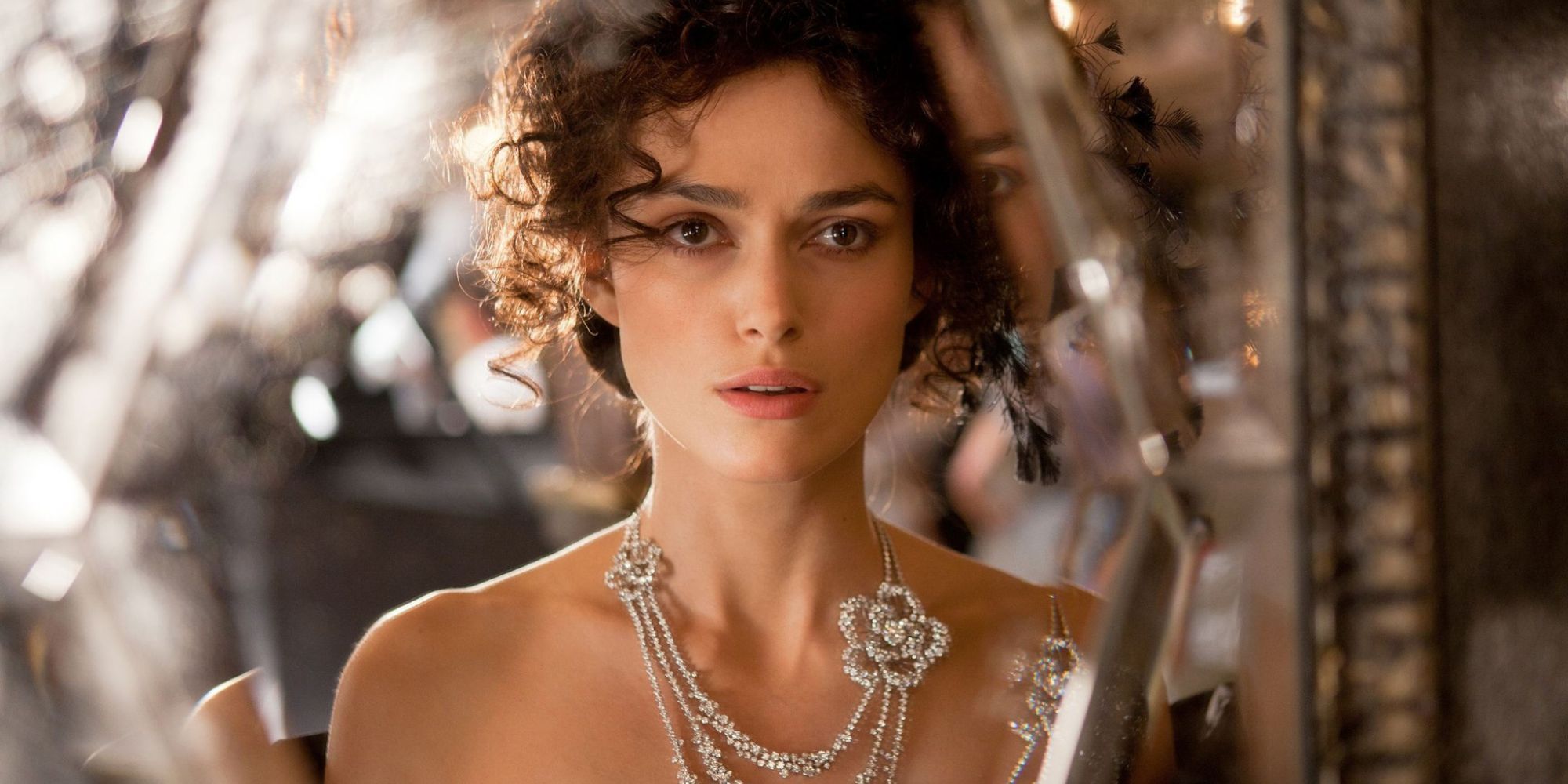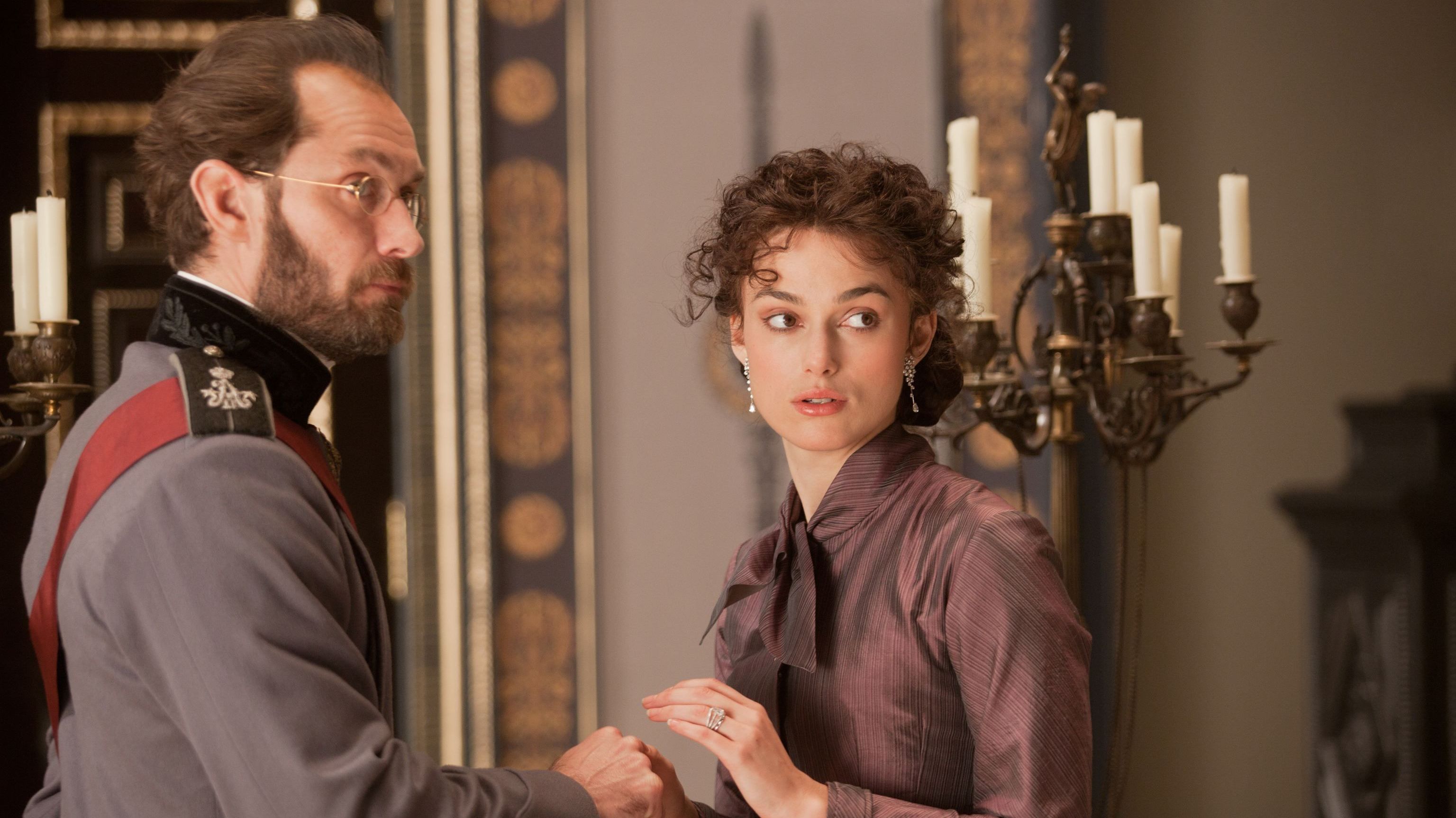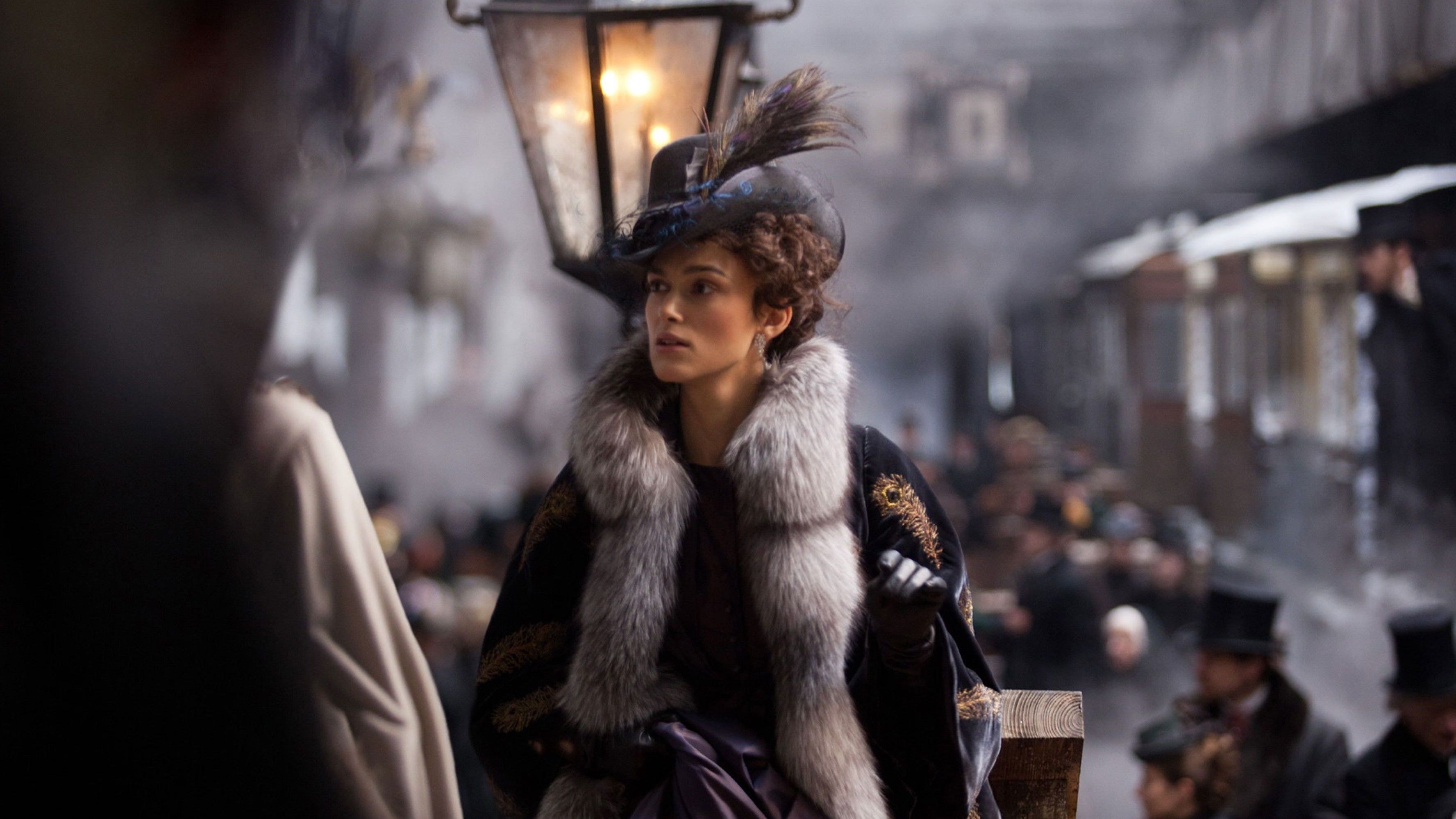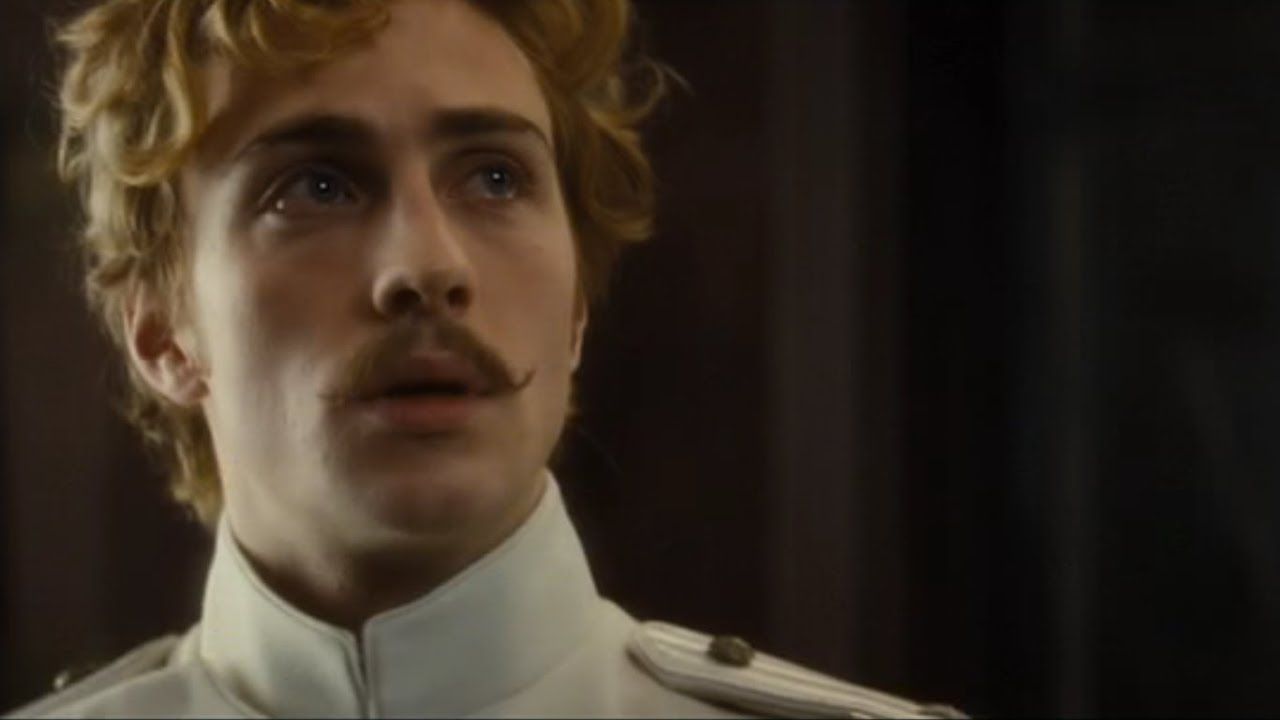If you’re a fan of historical dramas or romance movies, chances are you’ve watched 2005's Pride & Prejudice, directed by Joe Wright and based on the timeless novel by Jane Austen. You’ve possibly even seen Atonement, also by Wright, released in 2007. But even if you haven’t, you likely know that Keira Knightley is in both films. But one movie that may have slipped your notice is Anna Karenina, the 2012 adaptation of Leo Tolstoy’s novel and the most recent collaboration between Wright and Knightley. This film only made a $68.9 million box office gross worldwide against a $40.6 million budget, and generally received mixed to lukewarm reviews, garnering a 62% approval rating on Rotten Tomatoes alongside a weighted average of 63 on Metacritic. All of this makes it easy to dismiss Anna Karenina as a seemingly middle-of-the-road reworking of a book that’s already been adapted to death. In fact, this is pretty far from the truth; the movie is a bold and unique interpretation of its source material that definitely deserves more consideration.
Pride & Prejudice and Atonement received similar levels of quantifiable success — they made $121 million and $131 million at the box office against budgets of $28 million and $30 million, respectively, with their Rotten Tomatoes and Metacritic scores all in the 80s. Pride & Prejudice achieved four Academy Award nominations, including Best Actress for Knightley, whereas Atonement acquired seven, including Best Picture and Best Adapted Screenplay (plus a Best Supporting Actress nod for Saoirse Ronan, and a win for Best Score). While Anna Karenina was nominated in four categories, and even won Best Costume Design, it failed to break through in any of the so-called Big Five categories. Clearly, Anna Karenina stands out for its shortcomings, but this shouldn’t be the case: if nothing else, the film proves that Wright and Knightley are still a winning duo that knows how to turn out a period piece.
An Unconventional Setting Creates a Masterclass in Production Design
What Anna Karenina will be remembered for also happens to be one of its most controversial elements. From understated conversations to high-stakes sequences, Wright took the gutsy decision to set the majority of Anna Karenina on a theater stage, as if it were a play. This was a risky choice, but the stage setting never takes audiences out of the story — you might even forget it’s there. Rather than serving as a distraction, it simply adds another layer to the story, symbolizing the performative nature of the structured, pre-determined lives the characters lead. As an elite woman in 19th century Russia, Anna essentially has her whole life written out for her — she’s the actress having to play the role of a good wife to her husband. She is restricted within her marriage, just as she is by the physical constraints of the stage. And so when she goes “off-script,” defying societal expectations and chasing what she truly wants, it’s hard not to root for her. The backdrop of the theater stage constantly reminds you of the societal norms she’s challenging and the life of luxury she’s sacrificing.
In the rare scenes where the stage isn’t employed, nature is often the focus, juxtaposing with the pomp and excess of the theater and creating the impression that we’re finally seeing characters as their true selves. While stifling, the theater setting makes the narrative feel more enclosed and intimate, allowing the emotion in scenes to really shine through. This contrasts perfectly with the theatricality of ensemble members moving in a choreographed, synchronized manner, and the sets that shift and change right before our very eyes. At times, it’s over the top and melodramatic, and according to some, unnecessary — but these are all qualities of the society it reflects. It’s not only this, but a striking vision to behold as well; the painted backdrops, ornate decor, and intricate costumes comprise some stunning cinematography, and the film is worth it for this reason alone.
Keira Knightley Grounds the Film With One of Her Best Performances
This is not to suggest that those ambivalent towards the more technical aspects of filmmaking should give the movie a miss. The performances in Anna Karenina are largely a huge success, and they elevate an already remarkable story. Unsurprisingly, Keira Knightley is a highlight; her Anna is always sympathetic even at her most frustrating. She is as expressive and effortlessly charismatic as ever, imbuing the character with authenticity and genuine passion that makes her actions feel undeniable. Knightley is an expert at capturing the complexities in her character, even when these don’t feel fully interrogated by the script, and Anna always feels distinct from the period figures Knightley has played before. Never repetitive or stale, she infuses her performance with life and an energy that demands your attention, even among the overwhelming visual spectacle.
There are also noteworthy performances among the ensemble cast — particularly the likes of Jude Law, Domnhall Gleeson, Alicia Vikander, and Matthew Macfadyen. Jude Law’s character Karenin might seem serious and boring on paper, but the actor delivers a subtle and moving performance, whereas Gleeson and Vikander (who would later star together in Ex Machina) make a sweet couple that offer a touch of hope amid the doom and despair. And while it’s a little strange seeing Macfadyen as Keira Knightley’s brother, having previously played the Darcy to her Lizzy in Wright’s Pride & Prejudice, he’s charming and seamless in the role of Stiva.
'Anna Karenina' Wasn’t a Hit, So Where Did It Go Wrong?
Anna Karenina isn’t without its faults. Aaron Taylor-Johnson is somewhat miscast in the role of Vronsky, Anna’s lover; his portrayal is just a bit limp, and it seems a little far-fetched that Anna would be head over heels for such a lackluster guy. Their chemistry just doesn’t crackle in the way that it should, and since so much of the movie hinges on the convincingness of their romance, parts of it, especially the climax, aren’t as effective as they could’ve been. There’s bound to be other issues at play here too — maybe Anna Karenina is just a less accessible novel than, for example, Pride and Prejudice, or perhaps fans of the book are put off by the movie’s condensed or feminist approach. If you don’t connect to the story, characters, or messages, it would be understandable to write Anna Karenina off as a typical example of style over substance.
With that being said, the film remains a worthwhile experience for anyone who finds a lavish period romp irresistible, especially if this preference goes hand in hand with an interest in Russian cultural history or empowering takes on classic literary heroines. It’s not Wright’s best film, but it’s must-see viewing for anyone who enjoys his more popular works. Historical dramas and book adaptations can so often end up feeling generic and by the numbers, and at the very minimum, Anna Karenina should be applauded for taking imaginative risks that make it a one-of-a-kind movie.




